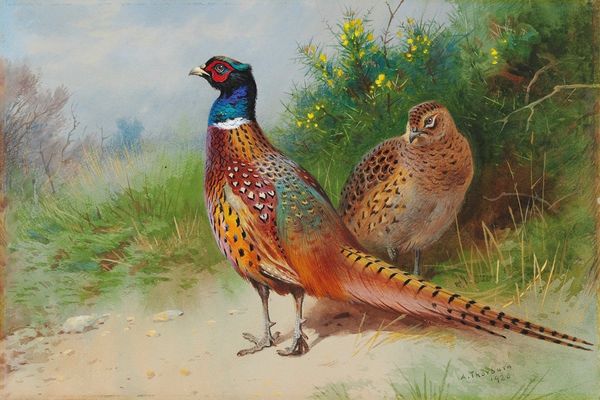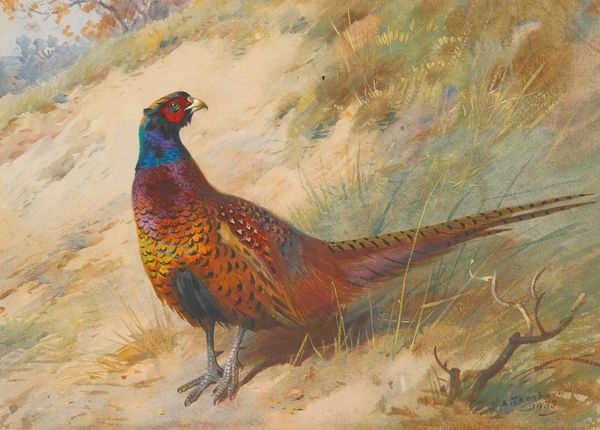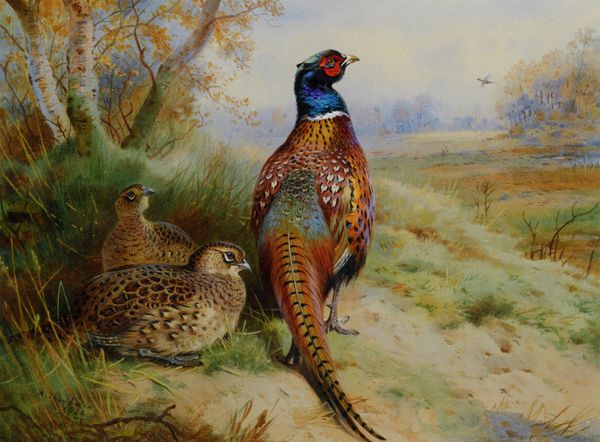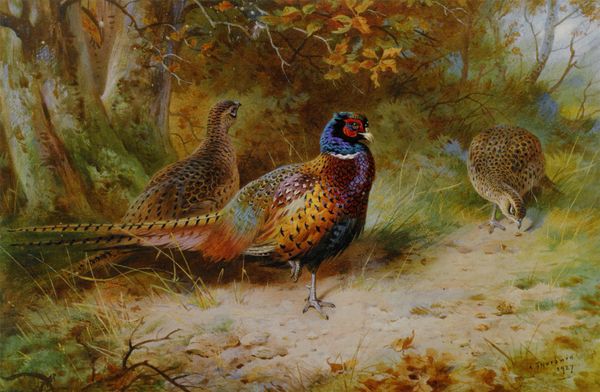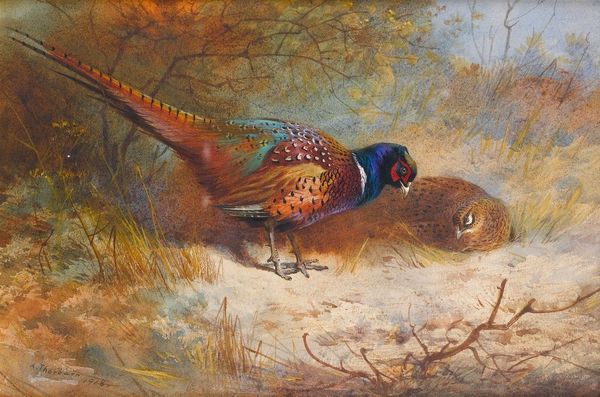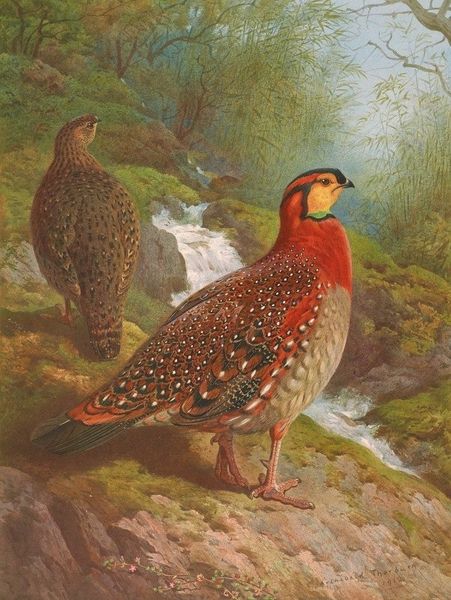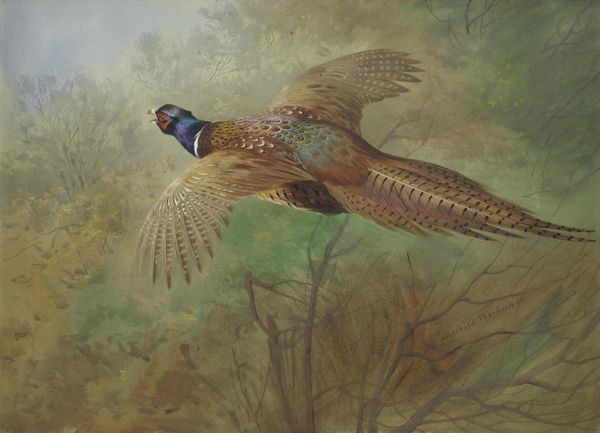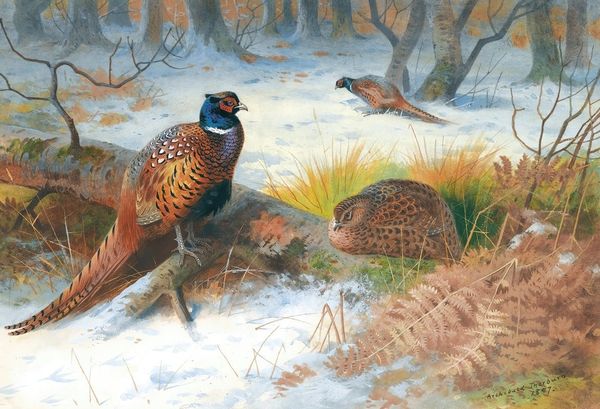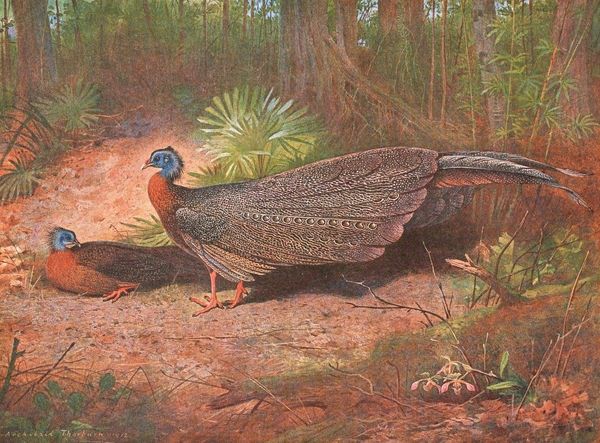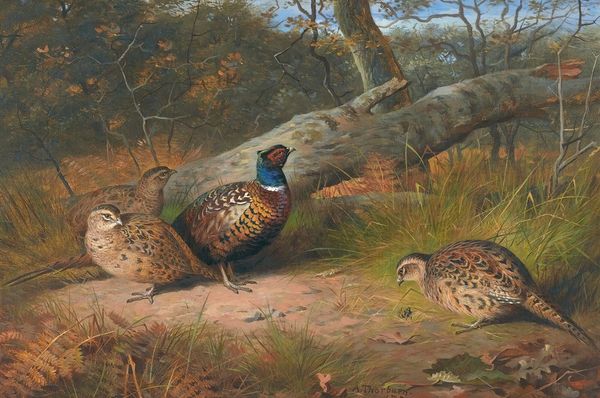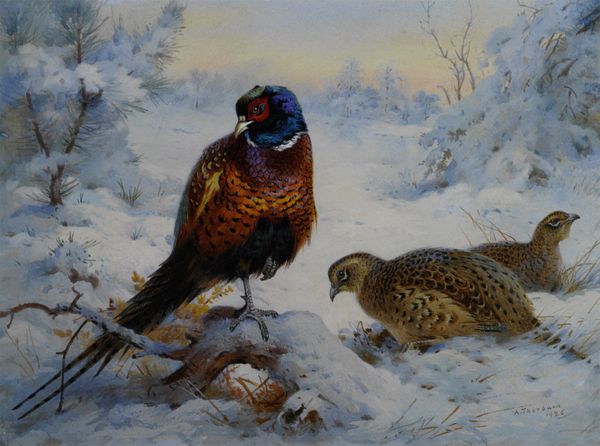
painting, watercolor
#
painting
#
landscape
#
bird
#
impressionist landscape
#
oil painting
#
watercolor
#
animal portrait
#
watercolor
#
realism
Copyright: Public domain
Editor: Archibald Thorburn’s watercolor painting, “Cock and hen pheasant in the undergrowth,” from 1927. It feels so peaceful, like a stolen glance into the birds’ natural habitat. What stands out to you most about this piece? Curator: Well, the overt naturalism is what one would notice at first, but for me, it sparks thoughts about human intervention within ecosystems. This close, intimate portrayal normalizes a colonial gaze over the natural world, doesn’t it? It prompts us to consider the relationship between artistic representation and power dynamics inherent in wildlife observation, a relationship interwoven with hunting and game keeping, which was a high status occupation. Editor: Colonial gaze? I hadn’t considered that. It seemed just a pretty picture of birds. Curator: Think about whose perspective we're seeing from, and why. The precise detail used in realism emphasizes possession of this knowledge, creating a power structure where nature becomes a resource rather than a dynamic, autonomous space. How do you think its function as a “sporting” picture impacts its interpretation? Editor: That makes sense! I guess I had separated this painting from the historical context of that hunting culture. The painting suddenly feels different, less innocent. Curator: Exactly. And considering this piece within the context of the 1920s, a period marked by intense social and political change, does this artistic choice evoke deeper questions regarding human interaction with the environment and the aestheticizing of nature for consumption? Editor: I see that, seeing the pheasants as "game", this isn't neutral. It makes me think differently about the tradition of animal portraiture in general. Curator: Precisely. And maybe even the "impressionist landscape" qualities act as a further tool to disguise those power structures in nature. Food for thought.
Comments
No comments
Be the first to comment and join the conversation on the ultimate creative platform.
